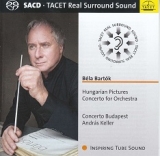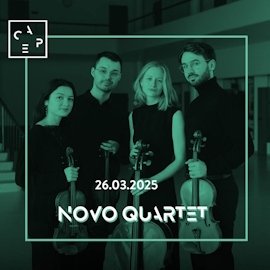Messerscharf und glasklar transparent: Andras Kellers Interpretation des Konzerts für Orchester von Bartok sucht nicht den großen symphonischen Klang, nicht die prächtige Geste, sondern die bestmögliche Transparenz, darin unterstützt von der Aufnahmeregie und dem Real Surround-Klang von Tacet. Das Konzert für Orchester wird somit ein Konzert, das die solistischen Rollen der Orchestermusiker als Priorität ansieht.
Nun haben das andere Dirigenten auch schon versucht, u.a. Pierre Boulez in seiner Aufnahme mit dem New York Philharmonic. Aber was bei Boulez konstruiert klang, ist hier mit einer großen Lebendigkeit und einer unvergleichlichen Spontaneität faszinierend. So mag sich Bartok das Konzert vorgestellt haben. Instrumentale Aufbereitung, Durchhörbarkeit, Prägnanz und Rhythmik sind vorbildlich und lassen den Hörer die Musik quasi dreidimensional erleben.
Schon der Beginn ist vielversprechend. Keller schafft gleich eine wunderbare, zauberhafte Atmosphäre und entwickelt daraus eine dramatische Musikhandlung, die weniger durch ihre Spannung gefangen nimmt als durch die instrumentale Vielfalt. Auch im zweiten Satz erweist er sich als meisterhafter Dirigent. Der 3. Satz, die Elegie, ist ein einziges Wunder an Licht und Schattenspielen, an Dramatik, Figuration und Lautmalerei. Einmal mehr geben die warmen Farben dem Ganzen einen direkt märchenhaften Charakter. Und während des ganzen Konzerts vergisst Keller nie, dass Bartok in diese Komposition eine Menge an Volksliedgut eingebracht hat und diese Mischung den Reiz des Stückes ausmacht, ja es gleichermaßen zusammenhält.
Daher macht die Platzierung der Ungarischen Bilder als erstes Werk der SACD auch Sinn. Das Orchester Concerto Budapest zeigt auch darin mit viel Flexibilität und wunderbaren Farben sein hohes Niveau.
Razor-sharp and crystal-clear transparency: Andras Keller’s interpretation of Bartok’s Concerto for Orchestra does not seek the grand symphonic sound, not the magnificent gesture, but the best possible transparency, supported in this by Tacet’s recording technique and Real Surround sound. The concerto for orchestra thus becomes a concerto that considers the soloistic roles of the orchestral musicians as a priority.
Now other conductors have tried this, including Pierre Boulez in his recording with the New York Philharmonic. But what sounded contrived with Boulez is fascinating here with a great vividness and an incomparable spontaneity. This is how Bartok may have envisioned the concerto. Instrumental preparation, listenability, conciseness and rhythm are exemplary and allow the listener to experience the music quasi three-dimensionally.
Even the beginning is promising. Keller immediately creates a wonderful, enchanting atmosphere and develops from it a dramatic musical plot that captivates less by its tension than by its instrumental variety. In the second movement, too, he proves himself a masterful conductor. The 3rd movement, the Elegy, is a marvel of light and shadow play, of drama, figuration and onomatopoeia. Once again, the warm colors give the whole a directly fairy-tale character. And throughout the concert, Keller never forgets that Bartok brought a lot of folk song material into this composition, and that this mix is what makes the piece so appealing, indeed what holds it together in equal measure.
Thus, the placement of Hungarian Pictures as the first work on the SACD makes sense. The orchestra Concerto Budapest shows its high level also in this with a lot of flexibility and wonderful colors.





















